Noble Transitions Team: Digging for Data in the Dirt
The Noble Transitions Team is monitoring soil health at 136 sample sites across all seven Noble Ranches, hoping to put “hard numbers” to the changes that come with regenerative grazing and management.
Spring is soil-sampling time on the Noble Ranches – 13,500 acres of working ranchlands across seven properties, including two pecan orchards. In multiple trips to 136 sample sites, Noble research associates and graduate students pull soil cores, measure water infiltration and count dung beetles, native bees, earthworms and more to get a detailed picture of soil health.
This is no casual effort, but just one part of the intensive multi-year ecological field research being conducted by the Noble Transitions Team.
With the start of Noble Research Institute’s decision in 2021 to manage all of its grasslands, grazing operations and orchards using regenerative practices based on soil health principles came the commitment to collect and record ecological, production and financial information. The ranch management team tracks livestock and pecan production and the economics of the operations, while monitoring the ecological changes falls mainly to the Transitions Team.
The team’s scientists monitor changes in several scientific metrics, covering the broad categories of vegetation, soils, water and wildlife. The hope is to, over time, be able to put “hard numbers” to what’s happening in the ranch ecosystems now that chemical inputs are no longer used and adaptive, multi-species grazing is in use.
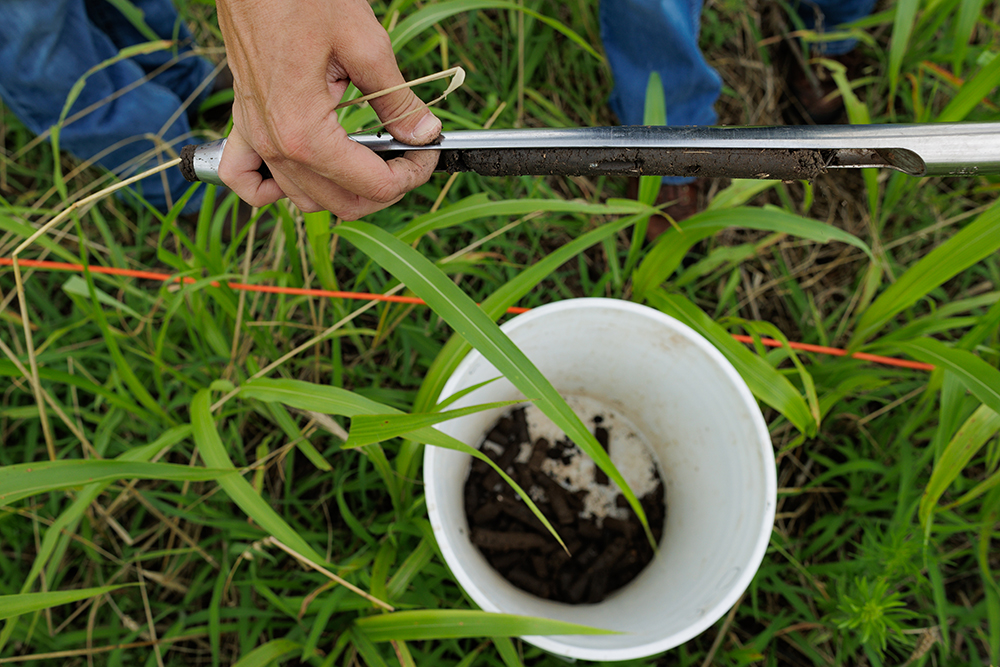
Measuring soil health on Noble Ranches
The team started the transitions soil research in 2022 with a series of tests that will be repeated in the fifth year of testing, with a subset being done every year in between.
In year one, the following tests and analysis were done on soil samples taken at depths of 0 to 6 inches and 6 to 12 inches:
- Haney soil health test, which integrates chemical and biological measurements to assess plant-available nutrients, soil respiration and water-soluble fractions of organic carbon and organic nitrogen and the ratio between them.
- PLFA, or phospholipid fatty acids, test, which gives a representation of living soil microbial biomass.
- Conventional or routine soil tests, measuring things like pH, soluble-salt and organic-matter content, nitrate-nitrogen and key mineral levels.
- Bulk density analysis to determine compaction levels.
- Aggregate stability analysis – how well the structure of the soil holds together.
- Soil color assessment.
At each site, the team also collected and stored what they call “legacy “samples, says Brian Williams, Noble research associate.
“Those are samples from each site that we set aside in a -80 (degrees) freezer and as dry samples for later use if there is a new soil health metric or new science we could use” to analyze and compare samples, he says.
Mike Proctor, Noble senior research associate and Transitions Team member, says the team is not only gathering data to measure changes in soil health on Noble Ranches, “but we’re gathering way more data than any rancher would need to do. The dust hasn’t settled on which of these tests is the best, so that’s some of what we’re looking at.”
He says he hopes they can learn which tests deliver the most valuable information and also which are the easiest and most economical for ranchers to do, “so we can get to the point where we can drop a few metrics and make it (soil health testing) easier on ranchers and easier to understand, as complex as it is.”
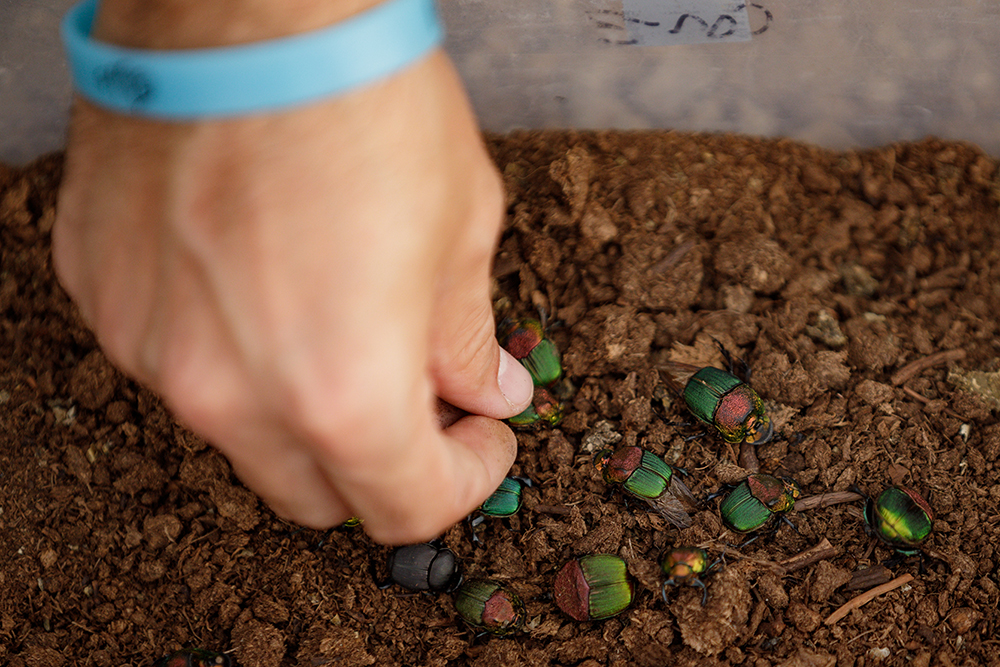
Too soon to report results
Both Proctor and Williams say that with only two years of samples so far, 2022 and 2023, it’s too early to draw conclusions about soil health changes.
That being said, it appears that “carbon levels are rising,” Williams says, “but it’s tough to say when you only have two data points to go between.” Proctor says he wouldn’t have expected to see any changes yet, but “you can kind of see some stuff changing out there in terms of carbon and organic matter. You can kind of see it’s trying to go in the right direction.”
Two graduate students are working with the team on taking dung-beetle and native pollinator (native bee) counts, and Proctor says he expects to see a difference there within a year.
“I know we’ve already figured out we’ve got way more dung beetles at Red River Ranch than we thought,” he says. “Orders of magnitude greater.”
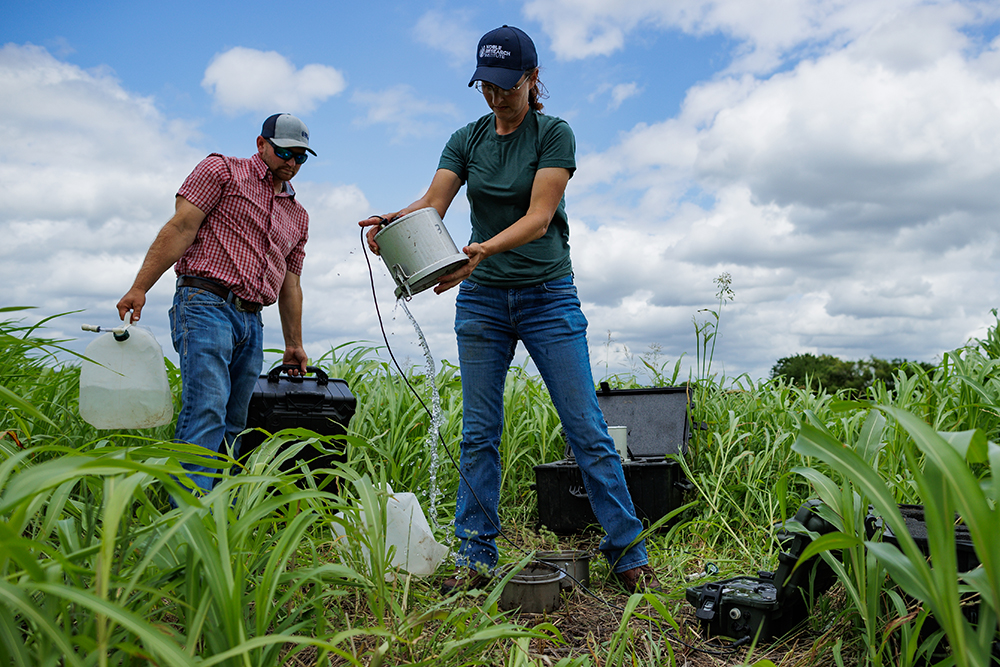
Considering context
When asked what other changes he expects to see with the transition to regenerative, Proctor says it depends on the ranch, especially due to differences in land-use history. Coffey Ranch, for example, was already being managed more regeneratively and was in better shape to start with, he says, while Red River’s sandy soils and history of intensive cultivation years ago means “it probably has had some pretty good abuse.”
Williams notes that while all the Noble Ranches are using adaptive grazing, some managers are trying different approaches to their pastures and the species they are grazing, which may also account for differences in soil health as the years progress.
Both team members say they hope to be able to demonstrate that regenerative practices work to improve soil health, add to ranch income and, “ultimately…keep the ranchers on the land,” Proctor says. He hopes ranchers can benefit as Noble shares that “No. 1, it (regenerative) does work, and it can be implemented, even if it’s not necessarily simple.
“In the end, if we can demonstrate that this really does make a difference in lifestyle and in how you manage and can pass the land down to your children,” he hopes more ranchers and farmers will consider managing regeneratively, he says. “And there are likely to be economic incentives for things regenerative can support, like helping water infiltration for the aquifers.”
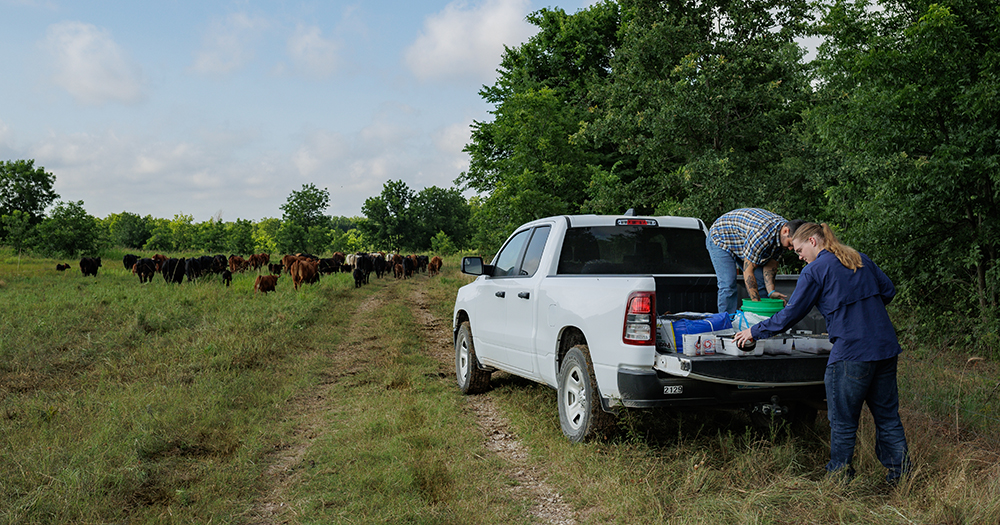
The unique real-world lab of Noble Ranches
There’s a lot written about the benefits of regenerative ranching in “popular literature,” Proctor says, “but very little done in the hard sciences. The sciences struggle with this, because it can’t be reduced to simple parameters. It doesn’t work with controls. It only functions when you have all of these variables going together.
“You can’t do it in a lab. It only works out here in the pasture.”
And that’s where you’ll find the Transitions Team most days from spring through fall, digging and counting and collecting data across the large-scale, real-world lab of the Noble Ranches.
Comment
Leave a Reply
1 comment on: "Noble Transitions Team: Digging for Data in the Dirt""

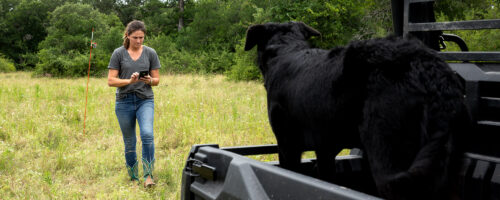
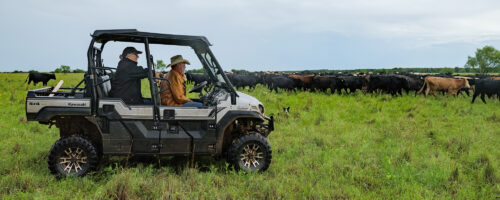
susan bergen
June 25, 2024Great to see data being taken.